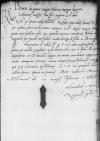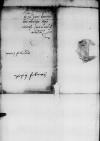Redditae sunt nobis cf. Ioannes DANTISCUS to Bona Sforza before 1538-02-07, probably in January, CIDTC IDL 7157, letter lost⌊litteraecf. Ioannes DANTISCUS to Bona Sforza before 1538-02-07, probably in January, CIDTC IDL 7157, letter lost⌋ Paternitatis Vestrae paper damaged⌈[estrae]estrae paper damaged⌉, ex quibus plane intelleximus Jane Seymour (*1508 – †1537), Queen consort of England, the third wife of Henry VIII Tudor (married in 1536), and mother of Edward VI⌊coniugemJane Seymour (*1508 – †1537), Queen consort of England, the third wife of Henry VIII Tudor (married in 1536), and mother of Edward VI⌋ serenissimi Henry VIII Tudor (*1491 – †1547), 1509-1547 King of England; son of Henry VII Tudor and Elizabeth of York⌊Angliae regisHenry VIII Tudor (*1491 – †1547), 1509-1547 King of England; son of Henry VII Tudor and Elizabeth of York⌋ Edward VI Tudor (*1537 – †1553), 1547-1553 King of England and Ireland; son of Henry VIII and Jane Seymour⌊filioEdward VI Tudor (*1537 – †1553), 1547-1553 King of England and Ireland; son of Henry VIII and Jane Seymour⌋ genito vita functam esse, quae quoniam coronata non fuerit, filium a regnicolis pro herede non haberi, multa denique dissidia in England⌊illo regnoEngland⌋ esse. Pergratum id nobis est, quod Paternitas Vestra nobis perscripserit. Cupimus, ut occulte exploret, quid demum illic erit, si Edward VI Tudor (*1537 – †1553), 1547-1553 King of England and Ireland; son of Henry VIII and Jane Seymour⌊filius illeEdward VI Tudor (*1537 – †1553), 1547-1553 King of England and Ireland; son of Henry VIII and Jane Seymour⌋ heres deputabitur, ut est mutabile vulgus; sin minus, tum demum negotium nostrum attemperare sciremus, interea temporis exspectabimus remque, quo sese inclinaverit, spectabimus. Et Paternitas Vestra, quicquid illic actum fuerit, faciat, ut sciamus.
Bene valeat.


 BCz, 1601, p. 668
BCz, 1601, p. 668